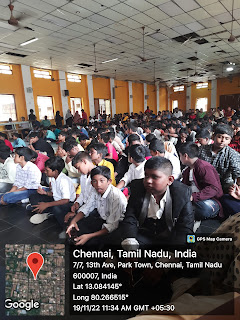Posts
Childrens day
- Get link
- X
- Other Apps

Children's Day Children’s day is celebrated in India to pay tribute to our former Prime Minister, Pt. Jawaharlal Nehru. Each year on 14 November his birth anniversary is marked as a praise of his love for the children. Before Nehru’s demise, children’s day was celebrated on 14 November, as observed by the United Nations. After his death, a decision was made by the parliament to honor the first Prime Minister of India. Thus it was his affection towards children that he came to be known as Chacha Nehru. Therefore on his birth anniversary, schools organize various cultural programs, children come dressed in colorful fancy clothes and teachers deliver special performances for the students .
basic operation
- Get link
- X
- Other Apps
Introduction to Mathematical Operations What are Operators and Operands? Knowing the difference between and purpose of Numbers/Values and Symbols/Functions, will help us understand the difference between Operators and Operands. Knowing the difference between and purpose of Operators and Operands, will help understand Mathematical-operations. Let us first focus on Operators. Operators are Mathematical Symbols that emphasise on a particular action, like how we have verbs in language English. Example, Run, Sit, Walk represents actions in English. Similarly ADD, SUB, etc., represents actions in Maths. In Maths these actions are termed functions. The basic Operators which stand as a foundation in Maths are, Next, let us move to understand what Operands are? Operands can be defined as a NUMBER or VALUE upon which the FUNCTION will be applied. Example If 2 and 5 are two given numbers or values, and ADD is the function given. Then the given statement can be written as, 2...
analytical geometry
- Get link
- X
- Other Apps
Analytical Geometry Analytical Geometry is a combination of algebra and geometry. In analytical geometry, we aim at presenting the geometric figures using algebraic equations in a two-dimensional coordinate system or in a three-dimensional space. Analytical geometry includes the basic formulas of coordinate geometry, equations of a line and curves, translation and rotation of axes, and three-dimensional geometry concepts. Let us understand the various sub-branches of analytical geometry, and also check the examples and faqs on analytical geometry. What Is Analytical Geometry? Analytical geometry is an important branch of math, which helps in presenting the geometric figures in a two-dimensional plane and to learn the properties of these figures. Here we shall try to know about the coordinate plane and the coordinates of a point, to gain an initial understanding of Analytical geometry. Coordinate Plane A cartesian plane divides the plane space into two dime...
